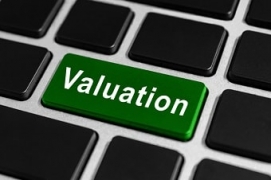Archived article
Please note that tax, investment, pension and ISA rules can change and the information and any views contained in this article may now be inaccurate.

This ratio provides a more accurate reflection of a company's net worth than using PE.
The global M&A market is booming. More than $3 trillion has been spent on company takeovers this year, according to financial data group Dealogic. An acquisitive company will not use the target’s market capitalisation – share price multiplied by the number of its shares – to work out how much the business is worth. Instead, to find a more accurate valuation enterprise value, or EV, is used.
Major influence
Debt and cash have a major influence on a company’s enterprise value. Debt increases the cost of buying a business, while the size of a cash pile could reduce the price tag. Therefore two companies with identical market caps could have different enterprise values.
Company A, for example, has a £50 million market capitalisation, no debt and £10 million cash. Company B has the same market cap, but £30 million of debt and no cash.
The metric looks beyond share price and profit forecasts to assess a company’s true value. Debt and other obligations, such as pension deficits, are important considerations in calculating the total value of a business because of the impact they could have on future profit growth.
In its simplest form EV is calculated by:
Market cap + net debt, (OR) – net cash
This gives an approximation of a company’s worth. Building a more accurate picture of a target’s value is a little more complicated but worth doing. Indeed anyone looking at potential investment should take a close look at the balance sheet to identify any liabilities beyond simple borrowings.
A more thorough calculation would be to add a company’s market cap together with its debt, which includes bonds and bank loans, and other liabilities, such as a pension deficit. You also subtract liquid assets like cash.
The cost of buying out the minority shareholders from any subsidiary that the target owns to claim 100% of that business’ cash flows should also be considered as should non-core assets, such as any property on a balance sheet.
Market capitalisation + net debt + buy-out of minorities + provisions – peripheral assets = enterprise value
Typically the data needed for this calculation can be found in a company’s annual report or preliminary results announcement.
Valuation, valuation, valuation
The metric can also be applied by investors to assess any company to make sure that it is adequately valued and that you are not paying too much for the shares. This is achieved when used in conjunction with earnings before interest, tax, depreciation and amortisation (EBITDA). EV to EBITDA captures more than a simple price to earnings (PE) ratio because it factors in debt. As with the PE it is useful to use forecast figures due to the forward looking nature of markets.
The metric is calculated by:
EV ÷ Earnings before interest, tax, depreciation and amortisation (EBITDA)
Heavily indebted pubs group Punch Taverns (PUB) has a forward PE of 5.2 times which is a significant discount to the average for its peer group of 12.3 but its EV/EBITDA of 9.16 is much closer to par.
Mark Dunne
Ways to help you invest your money
Put your money to work with our range of investment accounts. Choose from ISAs, pensions, and more.
Let us give you a hand choosing investments. From managed funds to favourite picks, we’re here to help.
Our investment experts share their knowledge on how to keep your money working hard.
